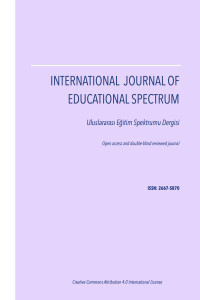Dramanın çocuklar için iletişim aracı olarak kullanımı
<!--
/* Font Definitions */
@font-face
{font-family:"Cambria Math";
panose-1:2 4 5 3 5 4 6 3 2 4;
mso-font-charset:0;
mso-generic-font-family:roman;
mso-font-pitch:variable;
mso-font-signature:-536870145 1107305727 0 0 415 0;}
@font-face
{font-family:Calibri;
panose-1:2 15 5 2 2 2 4 3 2 4;
mso-font-charset:162;
mso-generic-font-family:swiss;
mso-font-pitch:variable;
mso-font-signature:-536859905 -1073732485 9 0 511 0;}
/* Style Definitions */
p.MsoNormal, li.MsoNormal, div.MsoNormal
{mso-style-unhide:no;
mso-style-qformat:yes;
mso-style-parent:"";
margin-top:0cm;
margin-right:0cm;
margin-bottom:10.0pt;
margin-left:0cm;
line-height:115%;
mso-pagination:widow-orphan;
font-size:11.0pt;
font-family:"Calibri",sans-serif;
mso-ascii-font-family:Calibri;
mso-ascii-theme-font:minor-latin;
mso-fareast-font-family:Calibri;
mso-fareast-theme-font:minor-latin;
mso-hansi-font-family:Calibri;
mso-hansi-theme-font:minor-latin;
mso-bidi-font-family:"Times New Roman";
mso-bidi-theme-font:minor-bidi;
mso-ansi-language:EN-US;
mso-fareast-language:EN-US;}
.MsoChpDefault
{mso-style-type:export-only;
mso-default-props:yes;
font-size:11.0pt;
mso-ansi-font-size:11.0pt;
mso-bidi-font-size:11.0pt;
font-family:"Calibri",sans-serif;
mso-ascii-font-family:Calibri;
mso-ascii-theme-font:minor-latin;
mso-fareast-font-family:Calibri;
mso-fareast-theme-font:minor-latin;
mso-hansi-font-family:Calibri;
mso-hansi-theme-font:minor-latin;
mso-bidi-font-family:"Times New Roman";
mso-bidi-theme-font:minor-bidi;
mso-fareast-language:EN-US;}
.MsoPapDefault
{mso-style-type:export-only;
margin-bottom:10.0pt;
line-height:115%;}
@page WordSection1
{size:612.0pt 792.0pt;
margin:70.85pt 70.85pt 70.85pt 70.85pt;
mso-header-margin:35.4pt;
mso-footer-margin:35.4pt;
mso-paper-source:0;}
div.WordSection1
{page:WordSection1;}
-->
Drama aktivitelerinin yaratıcı ve
doğal bir atmosfer sağlayarak çocuk yaştaki öğrencilerin iletişim becerilerinin
geliştirmede etkin bir metot olduğu görülmektedir. Öğretmenler sınıflarında
çocukların drama gibi hoşlarına gidebilecek bir öğrenme ortamı yaratarak
onların yabancı dil öğrenimine katkıda bulunabilirler. Drama sayesinde küçük
yaştaki öğrenciler söz konusu aktivitelere istekli olarak katılarak hedef dili
daha rahat üretebilirler. Bu araştırmanın temel amacı drama aktivitelerinin
çocuk yaştaki öğrencilerin konuşma derslerindeki kullanışlılığını ortaya
koymaktır. Bu çalışma Ankara'da bulunan bir özel okuldaki 48 adet 7 inci sınıf
öğrencisi üzerinde yapılmıştır. Drama aktivitelerinin çocukların konuşma
derslerinde İngilizce öğrenimine katkısı olup olmadığı bir niteliksel araştırma
yöntemi ile öğretmen günlüğü, video kayıtları ve görüşmeler vasıtasıyla
yapılmıştır. Bu amaca yönelik olarak 6 hafta boyunca uygulanacak olan 3 ders
programı dizayn edilmiş ve öğrencilerin drama aktivitelerine yönelik tavırları
bu zaman zarfında araştırmacı tarafından gözlenmiştir. Sonuç olarak, bu çalışma
drama aktivitelerinin çocukların konuşma derslerine olumlu katkıda bulunduğunu
kanıtlamaktadır.
Anahtar Kelimeler:
drama, eğitimde drama, çocuklar, konuşma, iletişim
Using drama as a communication tool for young learners
<!--
/* Font Definitions */
@font-face
{font-family:"Cambria Math";
panose-1:2 4 5 3 5 4 6 3 2 4;
mso-font-charset:0;
mso-generic-font-family:roman;
mso-font-pitch:variable;
mso-font-signature:-536870145 1107305727 0 0 415 0;}
@font-face
{font-family:Calibri;
panose-1:2 15 5 2 2 2 4 3 2 4;
mso-font-charset:162;
mso-generic-font-family:swiss;
mso-font-pitch:variable;
mso-font-signature:-536859905 -1073732485 9 0 511 0;}
/* Style Definitions */
p.MsoNormal, li.MsoNormal, div.MsoNormal
{mso-style-unhide:no;
mso-style-qformat:yes;
mso-style-parent:"";
margin-top:0cm;
margin-right:0cm;
margin-bottom:10.0pt;
margin-left:0cm;
line-height:115%;
mso-pagination:widow-orphan;
font-size:11.0pt;
font-family:"Calibri",sans-serif;
mso-ascii-font-family:Calibri;
mso-ascii-theme-font:minor-latin;
mso-fareast-font-family:Calibri;
mso-fareast-theme-font:minor-latin;
mso-hansi-font-family:Calibri;
mso-hansi-theme-font:minor-latin;
mso-bidi-font-family:"Times New Roman";
mso-bidi-theme-font:minor-bidi;
mso-ansi-language:EN-US;
mso-fareast-language:EN-US;}
.MsoChpDefault
{mso-style-type:export-only;
mso-default-props:yes;
font-size:11.0pt;
mso-ansi-font-size:11.0pt;
mso-bidi-font-size:11.0pt;
font-family:"Calibri",sans-serif;
mso-ascii-font-family:Calibri;
mso-ascii-theme-font:minor-latin;
mso-fareast-font-family:Calibri;
mso-fareast-theme-font:minor-latin;
mso-hansi-font-family:Calibri;
mso-hansi-theme-font:minor-latin;
mso-bidi-font-family:"Times New Roman";
mso-bidi-theme-font:minor-bidi;
mso-fareast-language:EN-US;}
.MsoPapDefault
{mso-style-type:export-only;
margin-bottom:10.0pt;
line-height:115%;}
@page WordSection1
{size:612.0pt 792.0pt;
margin:70.85pt 70.85pt 70.85pt 70.85pt;
mso-header-margin:35.4pt;
mso-footer-margin:35.4pt;
mso-paper-source:0;}
div.WordSection1
{page:WordSection1;}
-->
Drama is seen as an effective way
to improve young learners communication skills while enabling them a creative
and authentic atmosphere. Teachers may help children by setting up a classroom
in which many students enjoy creative activities such as drama. With the help
of drama activities, students of young age can find it easy to produce the
target language and participate in the activity willingly. The main aim of the
study is to indicate the usefulness of drama activities for young learners of
ESL in speaking classes. The study was conducted on 48 participants from 7th
grade students at a private secondary school in Ankara. A qualitative study was
conducted to find out whether dramatic activities are helpful for young
learners of EFL in speaking classrooms through teacher's diaries, video tapes
and interviews. To achieve 3 lesson plans were designed in a 6 week period, and
each of the dramatic activities and the attitudes of students were observed.
The results of this study aimed to prove that dramatic activities are helpful
for young learners in speaking classrooms.
Keywords:
: drama, drama in education, young learners, speaking, communication,
___
- Adıgüzel, Ö. (2012). Eğitimde yaratıcı drama. Antalya: Naturel Yayıncılık.
- Alexander, R. (2000). Culture and pedagogy: International comparisons in primary education: Blackwell.
- Baldwin, P. (2008). The practical primary drama handbook. London: Sage.
- Bordan, S. (1970). Plays as teaching tools in the elementary school. West Nyack, N.Y.: Parker Pub.
- Cüceloğlu, D. (1987). İnsan insana. İstanbul: Altın Kitaplar Yayınevi.
- Eggers, K., & Eggers, W. (2010). Children's theater: A paradigm, primer, and resource. Lanham, Md.: Scarecrow Press.
- Emunah, R. (2013). Acting for real: Drama therapy process, technique, and performance. Routledge.
- Hawkes, T. (2016). Routledge Revivals: Shakespeare's Talking Animals (1973): Language and Drama in Society. Routledge.
- Henry, M. (2010). Drama's ways of learning. Research in Drama Education. The Journal of Applied Theatre and Performance, 5(1), 45-62.
- Kaaland-Wells, C. (1994). Classroom teachers' perceptions and uses of creative drama. Youth Theatre Journal, 8(4), 21-26.
- Slade, P. (1954). Child drama. London: University of London Press.
- Wagner, B. J. (1998). Educational drama and language arts: What research shows? Portsmouth: Heinemann.
- Wessels, C. (1987). Drama. Oxford: Oxford University Press.
- Wan, Y. S. (2017). Drama in Teaching English as a Second Language-A Communicative Approach. The English Teacher, 13.
- Via, R. A. (1987). The magic if" of theater: Enhancing language learning through drama. Cambridge: Cambridge University Press.
- ISSN: 2667-5870
- Yayın Aralığı: Aylık
- Yayıncı: Hakan ULUM
